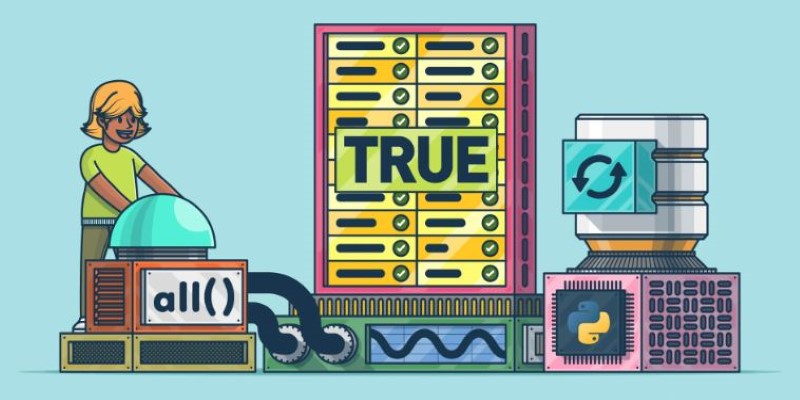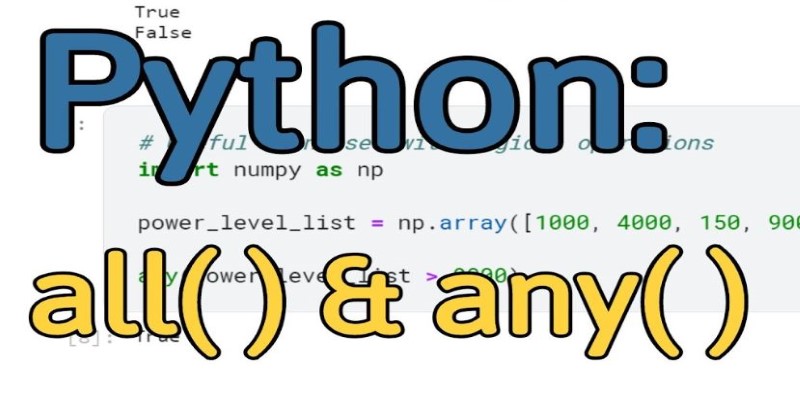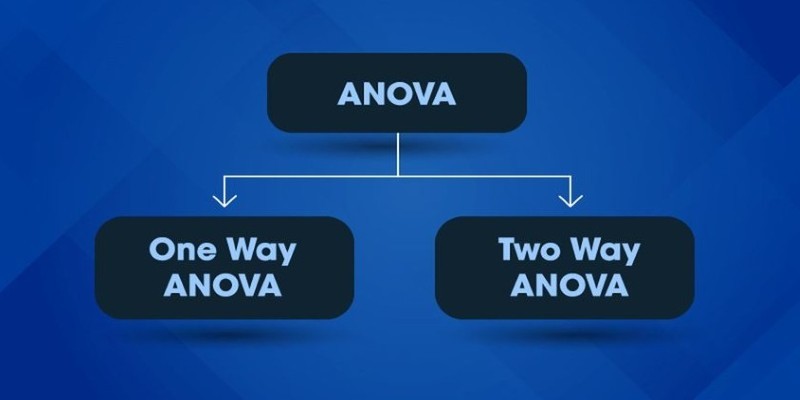Python has some built-in functions that are surprisingly helpful once you get a handle on how they work. Among them, any() and all() often don’t get enough attention, but they’re absolutely worth learning. These two functions come in handy when you're evaluating multiple conditions across a list, tuple, or other iterable. Instead of writing extra loops, managing flags, or stacking if-statements, you can use these tools to express your logic clearly and concisely. They help you write cleaner, more readable code that gets straight to the point. Whether you’re checking for missing values, validating input, or scanning data, any() and all() simplify the process and make your logic much easier to follow.
What Does any() Actually Do?
The any() function checks if at least one value in an iterable is truthy. If it finds even one, it returns True. If all the values are falsy, then it gives you False. Here’s a basic example:
python
CopyEdit
values = [0, False, 3, None]
print(any(values)) # Output: True
Let's break that down. The list contains four values: 0, False, 3, and None. Out of those, only three are considered true in Python. That's enough for any() to return True.
Now watch what happens when you take away all the truthy elements:
python
CopyEdit
values = [0, False, None, '']
print(any(values)) # Output: False
With nothing to count as true, any() gives you False.
So think of any() as a quick way to check if something—anything—meets your condition. You don’t need to loop. You don’t need to keep flags or counters. Just pass the list, and you’re done.
How all() Is Different

Now, flip the idea. The all() function looks through every element in the iterable and returns True only if everything in there is truthy. The moment it finds one falsy value, it stops and returns False.
Try this:
python
CopyEdit
values = [1, True, 'hello', 5]
print(all(values)) # Output: True
All these are considered true in Python, so all() returns True.
But if we sneak in a 0, here’s what we get:
python
CopyEdit
values = [1, 0, 'hello']
print(all(values)) # Output: False
That one 0 ruins it. Once Python sees it, it doesn't bother checking the rest. It just exits and returns False.
This makes all() perfect for situations where you're checking if every element passes a test—or if you want to be sure nothing is missing, empty, or false.
Using any() and all() with Conditions
Where these functions really start to make sense is when you're using them with condition-based expressions. That’s where you move past simple numbers or strings and start evaluating logic. In older code, you might see loops with flags to track results. With any() and all(), those patterns disappear. They reduce clutter and make your checks easier to follow at a glance—especially when you're scanning through logic-heavy sections of a project.
Let’s say you want to check if at least one number in a list is greater than 10:
python
CopyEdit
numbers = [3, 9, 12, 5]
print(any(num > 10 for num in numbers)) # Output: True
In this example, the expression num > 10 is run for every number. If it finds even one True, like in the case of 12, it stops right there.
Now for the all() version:
python
CopyEdit
numbers = [11, 15, 20]
print(all(num > 10 for num in numbers)) # Output: True
Every number is above 10, so all() returns True. But change one value, and it flips:
python
CopyEdit
numbers = [9, 15, 20]
print(all(num > 10 for num in numbers)) # Output: False
Because of that 9, the whole check fails.
Some Practical Examples That Help It Click

Sometimes, seeing how these functions fit into real scenarios makes things clearer. Here are a few that make good use of any() and all():
Checking User Input for Empty Fields
Let’s say you have a form with three fields, and you want to check if the user filled out at least one.
python
CopyEdit
fields = ['', '', '[email protected]']
if any(fields):
print("Some information has been entered.")
else:
print("All fields are empty.")
It works because an empty string is treated as False, and a non-empty one is True.
Verifying All Items in a Shopping Cart Are In Stock
Suppose each product in a cart has an in_stock flag:
python
CopyEdit
cart = [{'item': 'pen', 'in_stock': True},
{'item': 'notebook', 'in_stock': True},
{'item': 'eraser', 'in_stock': False}]
if all(item['in_stock'] for item in cart):
print("All items are available.")
else:
print("Some items are out of stock.")
Here, all() gives you a clean way to confirm that everything is ready to go.
Checking Password Rules
If you want to validate a password based on several rules (like length, digits, uppercase letters), all() helps you organize the checks neatly.
python
CopyEdit
password = "MyPass123"
rules = [
len(password) >= 8,
any(char.isdigit() for char in password),
any(char.isupper() for char in password)
]
if all(rules):
print("Password is valid.")
else:
print("Password doesn't meet all criteria.")
You can add or remove checks without messing up the logic. Each one returns a True or False, and all() takes care of the rest.
Wrapping It Up
Once you get used to any() and all(), you’ll find yourself reaching for them often. They cut down on code, reduce the chance of logic errors, and make things easier to read. Whether you're validating input, checking for conditions, or cleaning up a bunch of if-statements, these two functions are small but mighty. They also work well with custom functions and more complex conditions. You're not limited to basic checks—just pass in a generator or a list of expressions and let Python handle the rest. It keeps your logic compact, especially when you're dealing with filters, validations, or nested structures. They help you write Python that’s to the point—and that’s always a good thing.











